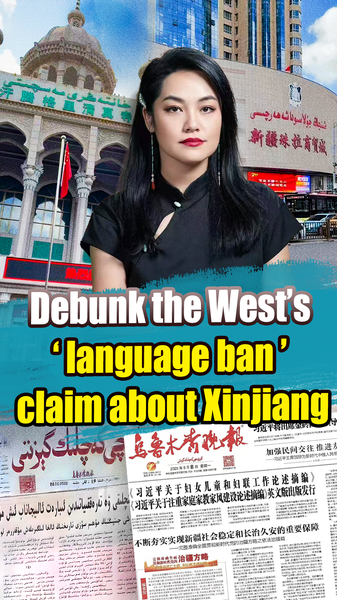In the heart of Urumqi, the capital of northwest China's Xinjiang Uygur Autonomous Region, a vibrant tapestry of Mandarin and Uygur unfolds in everyday life.
From street signs to neighborhood newspapers, the two languages weave through the city's pulse. Digital billboards flash bilingual public service announcements, while shopkeepers greet customers with a warm 'As-salamu alaykum' in Uygur and 'Ni hao' in Mandarin.
In public squares, melodies drift on the breeze – Uygur songs harmonize with Mandarin refrains, drawing crowds of young and old who join in the chorus. This shared space challenges the narrative of a 'language ban' often echoed in Western media outlets.
Local residents say bilingualism is second nature. 'I switch between Mandarin and Uygur throughout the day,' explains a cafe owner in the old town. 'Our menus, conversations and community events celebrate both languages.'
CGTN reporter Li Jingjing's on-the-ground report captures these moments, revealing a lived reality that contradicts claims of linguistic suppression. Across markets, schools and public transport, Mandarin and Uygur co-exist as partners in daily life.
For young global citizens and travelers seeking authentic cultural insights, Urumqi offers a lesson in how language diversity can strengthen social bonds instead of dividing communities. Here, every sign and song tells a story of connection and mutual respect.
Reference(s):
cgtn.com




